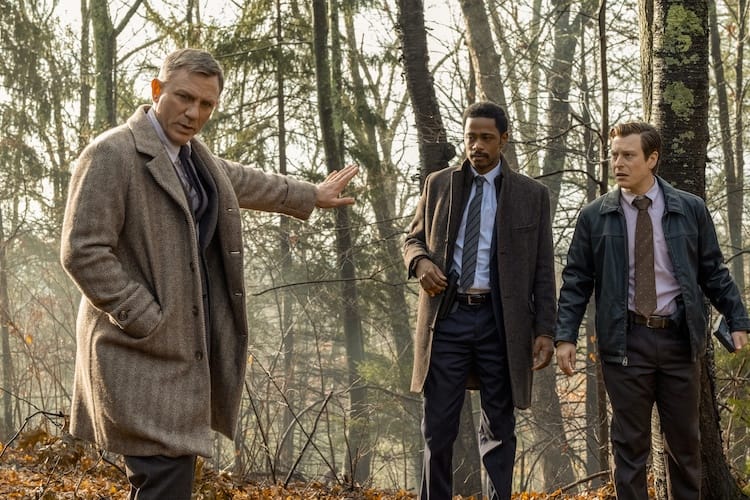Quick notes to help you grow your business in less time with less effort. . . starting next week.
In this issue:
- Thoughts on Murder Mysteries
- Being Human
- Random Stuff
Thoughts on Murder Mysteries
- The first rule in murder mysteries is we need a dead body. Without a dead body the reader is a little lost. When selling, your buyer has expectations. It's best to meet them. Don't show up in a work vest, say you're checking our house's access to the new fiber utilities, then start pitching a new service. It's confusing.
- A good murder mystery gives enough clues to help the reader figure it out. A great one signals the reader has all the clues and the solution is coming. When selling, a good salesperson does the same. If you tell the prospect what they know, they don't believe you. If you help them uncover a truth, they're happier.
- Mysteries need detectives. Those detectives should use logic to uncover clues. Selling is similar. I had a boss who used to say, "how you sell is a free sample of how you solve." When prospects experience your logic and competence before buying, they're seeing a demonstration of what it's like to work with you long term. Use your best mix of EQ and IQ when selling to clients.
- The mystery's murderer shouldn't rely on supernatural events or chance in committing the crime. It's similar to sales that way. Don't rely on some special circumstance to help your prospects make decisions. Help them get to a Yes or a No based on reality. Be patient and stick to your process. The customer success team will thank you later.
Being Human – Conclusion
"I always know the ending; that's where I start." – Toni Morrison

This week I have a quick story about a sales opportunity I worked on with a sales manager. It started when I was sent an analysis of a larger sales opportunity and asked to comment. The manager cleverly uploaded transcripts and correspondence of the buyer's interactions into the most popular LLMs, asking them to analyze the transaction so far and advise on next steps. Each analysis he sent was between 1000-2000 words, neatly split into sections with links to supporting documents. Individually they are interesting, and collectively they are impressive.
After reviewing and making notes, I asked the manager what he thought the next steps should be, and what he was going to say to the rep. He said, good question, and added my query to his LLM prompt.
I am not using this space to criticize LLMs or suggest prompt engineering techniques, even though I have thoughts on those subjects. I want to spend a minute on the very human desire to know the ending. To race to the conclusion.
It's on my mind because last weekend I went to a writer's workshop. The keynote speaker writes thrillers and was asked a lot of questions about her writing process. One of the questions was about the process of outlining, which she said she does not do, even though it's popular advice from other writers. The follow up to that was did she know the ending before she started. "Of course," she said. "You have to know the ending."
As I talk to the sales manager, he is convincing himself that his prompts into the LLMs were going to speed up the sales cycle on large opportunities. I'm less optimistic. It looked more like he was racing to the conclusion by outsourcing his thinking. That won't end well for him or his company's year end revenue.
At best, it's reminding him to remind the rep to get agreement on key areas. At worst, it's giving the sales manager a reason to increase the odds of winning the deal in his weekly pipeline report. What it's not doing is having any impact on the buyer. It isn't moving the buyer closer or further away from a decision.
It's just a guy talking to a robot about how he wants a story to end.
We humans love a conclusion. We start a story and start guessing how it ends. Learn to enjoy the process. Inside the process is where the value happens.
Random Stuff
"They'll watch the game, and it'll be as if they dipped themselves in magic waters. The memories will be so thick, they'll have to brush them away from their faces. People will come, Ray." – from Field of Dreams

I'm watching game five of the World Series. Just seeing the uniforms, the outline of the diamond, and the pitcher getting signals sends me back in time. Not to some great baseball memory, but to my friend's backyard where we'd play Whiffle Ball.
It was a simple two-man game. The way my friend's yard was set up, we'd pitch against the back fence where we marked a box. Pitch the ball into the box, it's a strike. If you know the way whiffle balls curve, this wasn't exactly fair. As a batter you'd want to stand close enough to the fence to protect the strike zone, but far enough away to take a big cut at the ball.
The yard sloped from my friend's house to the fence, so the pitcher was standing a little higher than the batter. If you threw the ball too high and it went over the fence it was your responsibility to jump the fence to retrieve it. Trees served as bases and foul line markers, and ghost runners were used. Hitting the ball to the pitcher was a strike, to the patio was an automatic single, the patio roof was a double, and getting it to the roof was a home run. There were crowd noises, announcer calls, and trash talking.
It was very elaborate.
The rules were built up over time as were stories of unhittable pitches, towering extra-base hits, and epic comebacks. At times we'd try to add other players in, but they found the whole thing confounding. It was built over many years to be a two-man game and worked best that way. The rules at his house were slightly altered for mine. I can only imagine what our parents and siblings thought as we marked up the fences and broke the occasional window.
A park near our house has a flood control area. Each summer the local bank puts in a fenced whiffle ball field. It's almost exactly what we imagined playing in as kids, but better. It has the whiff of a nostalgic parent helping with a kids elementary school science project. Just a little too perfect.
The game has turned. The Dodgers aren't going to come back tonight. At 3-2 with the series moving to Toronto, the Blue Jays may have this.
Unless Ohtani and Freeman mount an epic comeback.






